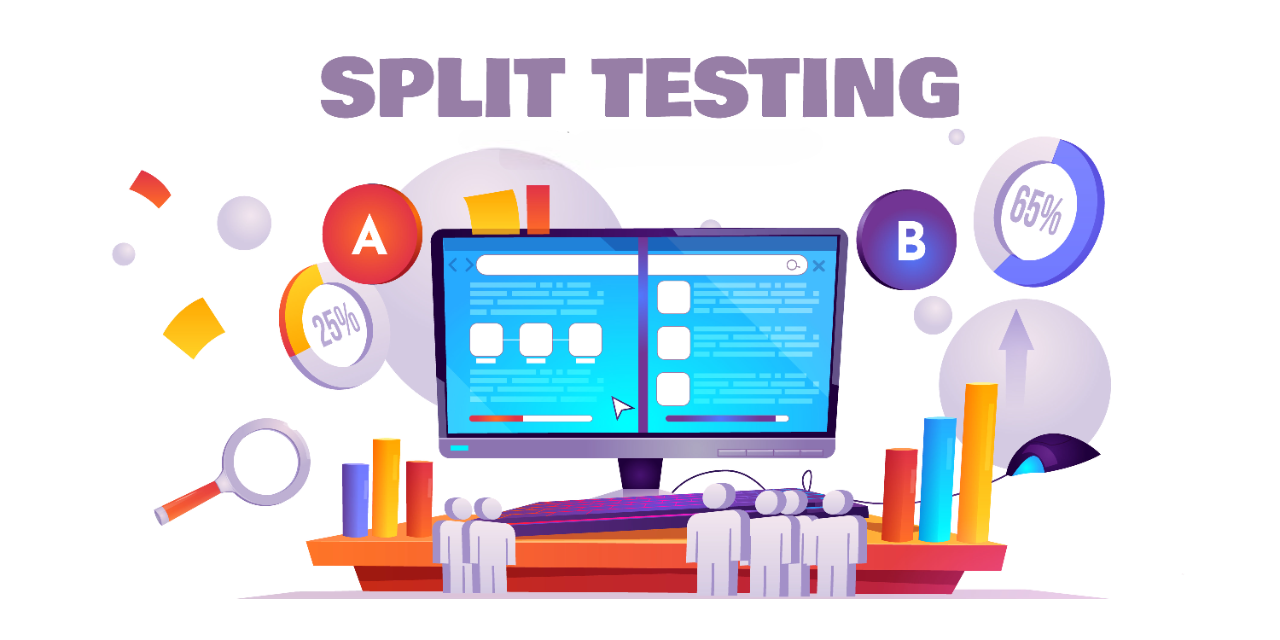A/B Testing for Amazon Sellers: Strategies to Improve Product Listings

One of the most competitive marketplaces in the world, millions of sellers compete for every customer on Amazon. Optimizing product listings is essential to boost conversion, grow sales, and compete with others. A/B testing: A/B testing is one of the best ways to help you fine-tune your listings. This data insight lets sellers figure out what works best for them, enabling them to make informed decisions to get the maximum out of their product.
This article will look at what Amazon A/B testing is and why it matters, as well as how to use it to optimize listings effectively. By the time we reach the end, you’ll have actionable insights to enhance your listings and flip conversion rates around. What is A/B Testing? A/B testing (or split testing) is the comparison of two variations of a product listing to understand which one performs better. That by displaying separate versions for different segments of shoppers and examining the outcomes.
What is A/B Testing?
A/B testing, also known as split testing, is a method where two variations of a product listing are compared to determine which one performs better. This is done by showing different versions to different segments of shoppers and analyzing the results.
Amazon’s Manage Your Experiments tool allows brand-registered sellers to conduct A/B tests on key listing elements, including:
- Product Titles
- Images
- Bullet Points
- Product Descriptions
- A+ Content
By systematically testing these elements, sellers can identify the most effective version and improve their product’s visibility and conversion rate.
Why is A/B Testing Important for Amazon Sellers?
A/B testing eliminates guesswork and helps sellers make data-backed decisions. Here’s why it’s crucial:
- Increases Conversion Rates – Optimized listings attract more clicks and convert visitors into buyers.
- Improves Search Rankings – Higher conversion rates signal to Amazon’s algorithm that your product is relevant, boosting your ranking.
- Enhances Customer Experience – Testing ensures your listing meets customer expectations, leading to better reviews and lower return rates.
- Reduces Advertising Costs – Effective listings require less ad spend to achieve higher sales.
- Maximizes Profit Margins – Well-optimized listings sell more units at potentially higher prices, improving overall profitability.
- Helps Maintain Competitive Pricing – Implementing the right price strategy is essential for conversions. Using a fastest repricing tool ensures sellers stay competitive by automatically adjusting prices in response to market fluctuations.
Key Elements to A/B Test in Amazon Listings
1. Product Title
The product title is one of the first things shoppers notice. A well-optimized title should:
- Include the main keyword.
- Be clear and descriptive.
- Highlight key features and benefits.
A/B Test Idea: Test a title with a brand name vs. a keyword-focused title.
2. Images
High-quality images significantly impact conversions. Amazon allows up to 9 images, and the first image is the most important.
A/B Test Idea: Test lifestyle images vs. plain white background images to see which engages customers more.
3. Bullet Points
Bullet points summarize the product’s features and benefits. They should be concise yet informative.
A/B Test Idea: Compare short and concise bullet points with detailed ones to find the best-performing format.
4. Product Description & A+ Content
Enhanced content provides more details about the product and can persuade customers to buy.
A/B Test Idea: Test traditional descriptions vs. A+ Content with high-quality visuals and comparison charts.
5. Pricing
Price plays a major role in purchasing decisions. Competitive pricing can significantly affect conversion rates.
A/B Test Idea: Test a slightly lower price against a higher price with added value (e.g., bundle deals or bonuses).
Steps to Optimize Product Listings with A/B Testing
1. Identify the Element to Test
Choose a single element to test at a time (title, image, bullet points, etc.). Testing multiple elements simultaneously can lead to unclear results.
2. Set Clear Goals
Determine what metric you want to improve – CTR, conversions, engagement, or profitability. Having a clear goal will help measure success accurately.
3. Use Amazon’s Manage Your Experiments Tool
Amazon provides the Manage Your Experiments tool for brand-registered sellers to conduct A/B tests seamlessly. This tool allows you to test different elements of your product listing and view statistically significant results.
4. Run the Test for an Appropriate Duration
Ensure the test runs long enough to gather sufficient data (typically 4-10 weeks). Ending tests too early can lead to misleading results.
5. Analyze the Results and Implement the Best Performing Version
Once the test concludes, analyze the data and apply the winning variation permanently to your listing. Monitor performance post-implementation to ensure continued success.
Common Mistakes to Avoid in A/B Testing
- Testing too many elements at once – This makes it difficult to determine what caused performance changes.
- Running the test for too short a period – Insufficient data can lead to unreliable conclusions.
- Ignoring statistical significance – Make sure there’s enough traffic before making a decision.
- Not keeping track of changes – Document test variations and results to refine future testing strategies.
- Forgetting about customer preferences – Customer feedback and reviews provide valuable insights that should be integrated into A/B testing.
Additional Tips for Better Results
- Monitor Competitors – Keep an eye on what successful competitors are doing and test similar strategies.
- Leverage Customer Feedback – Read reviews to understand pain points and improve listing elements accordingly.
- Optimize for Mobile Users – A large percentage of Amazon shoppers browse on mobile. Ensure your images, bullet points, and descriptions are mobile-friendly.
- Test Seasonal Adjustments – Some elements, like pricing or images, may perform better during different seasons or holidays.
Moreover, sellers should focus on steps to optimize product listings, such as improving visuals, refining copy, and testing variations to ensure maximum conversions.
Conclusion
A/B testing is a powerful strategy for Amazon sellers looking to improve their product listings. By systematically testing and refining different elements, sellers can increase conversions, boost rankings, and stay ahead in the competitive Amazon marketplace.
Start testing today and unlock the full potential of your product listings!
Recent Posts
- The Timeless Allure of Kundan Jewellery: A Symbol of Royal Elegance
- What is a Capacitive Switch and How It Works?
- Top Services Offered by an Artificial Intelligence Automation Agency
- How Can AI-Powered Inbound Call Centers Improve Customer Satisfaction?
- Understanding Your Customers: The Power of Market Research
Recent Comments

Top Web Development Companies in Florida (2025 Edition): Build with the Best in the Sunshine State

The Role of Secure Web Gateways in Zero Trust Security Models

How to Choose the Right Mobile Device Management Solution for Your Business

Cloud-Based Business Continuity Solutions: Are They Right for You?

Why Skill-Based Games Are Gaining Popularity in India

Learn How to Play Tez Rummy – Simple Guide for Complete Beginners

Unlocking the Volleyball Betting Hack Sportsbooks Want Hidden: Strategies for Success
